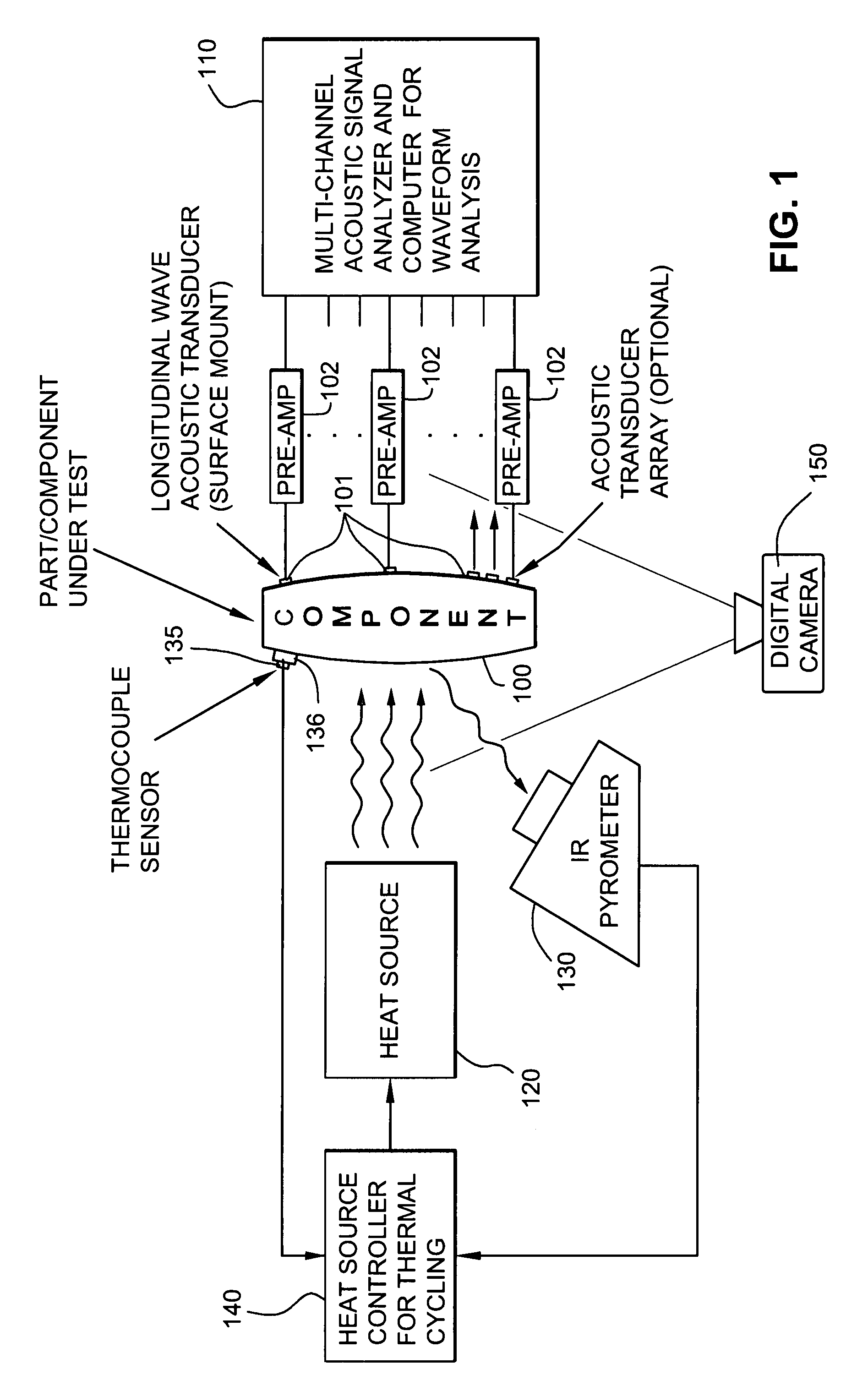Method and apparatus for testing and evaluating machine components under simulated in-situ thermal operating conditions
a technology for evaluating machine components and operating conditions, applied in the direction of vibration measurement in solids, instruments, using mechanical means, etc., can solve the problems of repeated thermal stresses to which the component may be subjected, no simple, inexpensive and accurate method or apparatus available for testing and evaluating individual parts or components of turbine engines, and take a long time to perform. , to achieve the effect of simple, inexpensive and accura
- Summary
- Abstract
- Description
- Claims
- Application Information
AI Technical Summary
Benefits of technology
Problems solved by technology
Method used
Image
Examples
Embodiment Construction
[0016]FIG. 1 is a basic functional block diagram for a exemplary implementation of a system that combines cyclic heating and / or cooling with acoustic emission monitoring for the purpose of testing and evaluating an individual machine component (i.e., a specimen component) under simulated in-situ thermal operating conditions. In the non-limiting example implementation disclosed herein, the energy and amplitude of spontaneously occurring acoustic “hits” (i.e., sonic or vibrational emissions greater than a predetermined threshold or amplitude) detected during a repeated cycle of heating a machine component, then allowing it to cool off, are recorded and analyzed for the purpose of obtaining data on the initiation and propagation of cracks in the component's structure, among other things. The number of heating-cooling cycles required to initiate a crack and / or the number of heating-cooling cycles needed to propagate a crack to a predetermined size / distance within the tested component ar...
PUM
 Login to View More
Login to View More Abstract
Description
Claims
Application Information
 Login to View More
Login to View More - R&D
- Intellectual Property
- Life Sciences
- Materials
- Tech Scout
- Unparalleled Data Quality
- Higher Quality Content
- 60% Fewer Hallucinations
Browse by: Latest US Patents, China's latest patents, Technical Efficacy Thesaurus, Application Domain, Technology Topic, Popular Technical Reports.
© 2025 PatSnap. All rights reserved.Legal|Privacy policy|Modern Slavery Act Transparency Statement|Sitemap|About US| Contact US: help@patsnap.com



